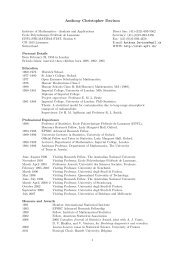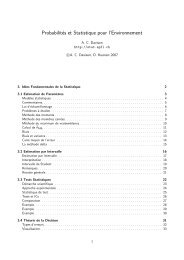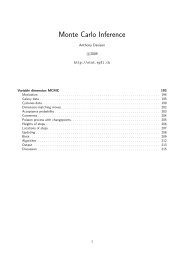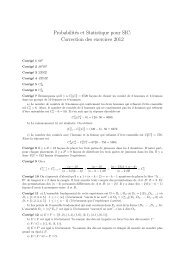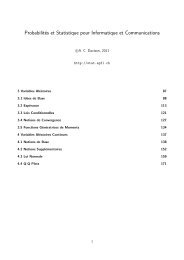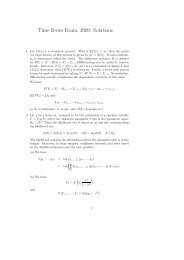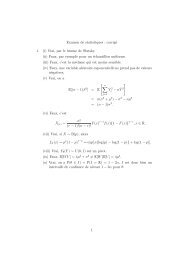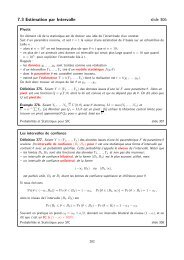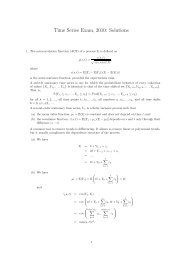Time Series - STAT - EPFL
Time Series - STAT - EPFL
Time Series - STAT - EPFL
You also want an ePaper? Increase the reach of your titles
YUMPU automatically turns print PDFs into web optimized ePapers that Google loves.
White noise<br />
Definition 4 A stochastic process {Y t } is called white noise if its elements are all uncorrelated, with<br />
mean E(Y t ) = 0 and variance var(Y t ) = σ 2 .<br />
If in addition the Y t are normally (Gaussianly) distributed, then we have Gaussian white noise,<br />
iid<br />
Y t ∼ N(0,σ 2 ).<br />
The term ‘white’ comes from an analogy with white light, and indicates that all frequencies are<br />
equally present ...<br />
−3 −1 1 3<br />
0 100 200 300 400 500<br />
<strong>Time</strong><br />
−3 −1 1 3<br />
0 100 200 300 400 500<br />
<strong>Time</strong><br />
<strong>Time</strong> <strong>Series</strong> Autumn 2008 – slide 26<br />
Moving average<br />
□ The panels on the previous page showed Gaussian white noise {ε t } above, and a smoothed version<br />
Y t = 1 3 (ε t + ε t−1 + ε t−2 ).<br />
□ Averaging reduces the variance, and introduces correlation in {Y t }.<br />
Example 5 Compute the autocorrelation function of the above moving average and show that it is<br />
stationary. Discuss the figure below.<br />
Y_{t+1}<br />
−1.5 −0.5 0.5 1.5<br />
Y_{t+2}<br />
−1.5 −0.5 0.5 1.5<br />
Y_{t+3}<br />
−1.5 −0.5 0.5 1.5<br />
−1.5 −0.5 0.5 1.5 −1.5 −0.5 0.5 1.5 −1.5 −0.5 0.5 1.5<br />
Y_t<br />
Y_t<br />
Y_t<br />
<strong>Time</strong> <strong>Series</strong> Autumn 2008 – slide 27<br />
13



